Description
About the course
Professor Anupam Basu, a faculty from the Department of Computer Science and Engineering at Indian Institute of Technology Kharagpur, has designed this course from the bottom up approach. The main focus of this course is to enable you to formulate simple algorithms for arithmetic and logical problems and translate the algorithms to programs (in C language). The course enables you to an ability to test and execute the programs and correct syntax and logical errors.
In this course, you will be able to implement conditional branching, iteration, recursion, and also be able to decompose a problem into functions and synthesize a complete program using the divide and conquer approach. This course covers the use of arrays, pointers, and structures to formulate algorithms and programs and apply programming to solve matrix addition and multiplication problems. In addition to this, the course also covers the searching and sorting problems. The learner will be able to apply programming to solve simple numerical method problems. This is completely an online course with worldwide accessibility.
Learning Outcomes
After completing this course, you will be able to:
- Develop strong logical and problem-solving skills.
- Develop self-confidence in finding the solution to the given problems with the help of logical thinking and following algorithmic approach.
- Get hands-on practice in C programming.
- Boost your hireability through innovative and independent learning.
Target Audience
The course can be taken by:
Students: All students who are pursuing any technical/professional courses.
Teachers/Faculties: All computer science and engineering teachers/faculties.
Professionals: All working professionals from the IT industry.
Why learn Problem Solving through Programming in C?
Why is it important to learn problem-solving skills? Because we all have to make decisions. Whether you are a student, a parent, a businessperson, or the president of any country, you face problems every day that needs solving. For all these things, problem-solving is really really important. Especially when it comes to programming, problem-solving is the must. If you do not develop sound problem-solving skills, you will end up messing around with a given problem and you would not be able to obtain a solution for ages. Thus, it is very important to learn problem-solving through programming in C.
Course Features
- 24X7 Access: You can view lectures as per your own convenience.
- Online lectures: 18 hours of online lectures with high-quality videos.
- Hands-on practice:Includes source code files for hands-on practice.
- Updated Quality content: Content is latest and gets updated regularly to meet the current industry demands.
Test Evaluation
Each lecture will have a quiz containing a set of multiple choice questions. Apart from that, there will be a final test based on multiple choice questions.
Your evaluation will include the overall scores achieved in each lecture quiz and the final test.
Certification
This course is free and it has no certificate.
Topics to be covered
- Module 1: Introduction
This lecture covers some of the problems that are often encountered in daily life and can be solved through programming.
- What are the examples of real-life problems?
- What is the Simple decision-making problem?
- What is a Maximization/Optimization problem?
- What is the Path find the problem?
- What is Maze searching problem/Path searching problem?
- Module 2: Idea of Algorithms
This lecture attempts to cover the details of programming. Programming is a process of creating a set of instructions that tell a computer how to perform a particular task. Also, this lecture covers the ways of solving a problem using the computer and the basic idea of machine language and program translation and algorithm.
- What problems can be solved using a computer and what is programming?
- How is a problem solved using a computer?
- What problem cannot be solved using a computer and what is machine language, translation and algorithm?
- Module 3: Flowchart and Pseudocode
This lecture covers all about algorithms. An algorithm is a sequence of steps to be followed to solve a problem, along with this, the lecture also covers the concept of flowcharts and pseudo codes.
- What is an Algorithm and how it is expressed?
- How to make a flowchart and write pseudocode for computing average of 3 and N numbers?
- How to make a flowchart and write pseudocode for computing Maximum of 3 and N positive integer?
- Module 4: Introduction to programming Language concepts
This lecture covers all about a computer program. A program is a specific set of ordered operations for a computer to perform. The lecture also covers the components of a computer and representation of information in a computer. Also, this lecture covers the notion of the binary number system, high level and machine language, language translator and use of the compiler.
- What is a program and what is a computer and its components?
- What is a binary number system?
- How computer processes the code?
- Module 5: Variables and memory
This lecture covers in detail, the variables. A variable is simply a name that is used to refer to some location in memory – a location that holds a value with which we are working. Also, this lecture covers addresses of memory locations and assignment to memory locations.
- what are a variable and value?
- How variable is allocated memory by the compiler?
- Module 6: Types of Software and compilers
This lecture covers the hardware, software and the various types of software. The lecture also covers the valid word or statement in C and the machine language components of a C program.
- What are the software and hardware and what are the types of software?
- What is an Operating system and how human language is interpreted in C?
- What are the naming rules in C and what is a statement?
- How is a C program written?
- Module 7: Introduction to C programming language
This lecture covers the structure of a C Program and a sample c program has been demonstrated to describe the structure of the C program.
- What is the structure of a C program?
- What is an example of the C program?
- Module 8: Variables and variable types in C
This lecture covers some of the basic C programs to print a statement, find the sum of two number that describes the variable types, find the largest of three numbers to describe Input and Output in C. The lecture also covers C programs to compute the area of a circle to describe basic functions in C.
- What is the basic C program to print the statement?
- What is the basic C program to find the sum of two numbers?
- What is the basic C program for Find the largest of three numbers?
- What is the basic C program to Compute the area of a circle?
- Module 9: Introducing functions
This lecture covers the C programs to compute the area of a circle to describe basic functions in C and the lecture also covers the desirable programming style of C programs and C vocabulary.
- What is the basic C program to Compute the area of a circle (contd..)?
- How to write a basic program in C Language?
- What are Characters, identifiers and Keywords in C language?
- Module 10: Address and Content of variables and types
This lecture covers various data types, memory allocation to variables based on their data types. The lecture also covers constant, its types and the concept of pointers.
- What are the datatypes, their examples and memory storage?
- What are constants in C?
- What are Pointers in C?
- Module 11: Assignment statement and Operators in C
This lecture covers the assignment statement. An assignment statement is used to assign values to variables, using the assignment operator(=). The lecture also covers the different operators used in expressions and operator precedence.
- What is an Assignment statement in C?
- What are the operators and their types in C?
- What is the precedence of Operators in C?
- Module 12: Arithmetic Expressions and Relational Expressions
This lecture covers in detail, the operator precedence with the help of an example to solve arithmetic expression. The lecture also covers the Integer, Real and Mixed Model Arithmetic, typecasting. Also, the lecture covers different Relational operators.
- How to solve arithmetic expression using operator precedence?
- What are the different types of Arithmetic expressions?
- How to assign a value to the variable?
- What are Relational operators?
- Module 13: Logical Operators and change in Control Flow
This lecture covers the logical operators, printf and scanf statement in C. The lecture also covers the control structure in C.
- What are Logical Operators?
- What is an Input/Output statement in C?
- What is a Control structure?
- Module 14: Use of Logical Operators in Branching
This lecture cover in details of achieving control structure in C, specifying the conditions using relational & logical operators. The lecture also covers the explanation of if-statement in the control structure.
- How to achieve a control structure?
- How to specify the conditions in C?
- What is an if statement in control structure?
- Module 15: Branching: IF ELSE Statement
This lecture covers if-else statement in the control structure and Nesting of if-else statements in Control structures.
- What is an if-else statement in control structure?
- What is a Nested if-else statement in control structure?
- Module 16 : If Else statement (contd)
This lecture covers in detail, the nested if-else stattement and Pre-increment, Pre-decrement, Post-decrement,Post-increment notations.
- How nested if- else structure is used?
- How to use nested if-else to find the type of triangle?
- How Is Logical Equality compared with Assignment operators?
- How is expression evaluation in C generalized?
- What are Increment and decrement operations?
- Module 17: Switch statement
This lecture covers the prefix and postfix operations, Ternary Conditional Operator(?:) and the switch statement.
- What are Prefix and postfix notations?
- How are pre and post increment used?
- What is a Ternary/Conditional Operator in C?
- What are a switch statement and its example?
- Module 18: Switch statement (Contd.) and introduction to loops
This lecture covers the getchar() function. This function is used to get the character from the user with the help of switch statement. The lecture also covers loop, counter-controlled and Sentinel-controlled repetitions.
- WHat is getchar() function and break statement in C?
- What are the types of repetition?
- Module 19: Implementing Repetitions (Loops)
This lecture covers the implementation of loop statements while, do-while, and for that allow us to execute a statement(s) over and over. Like a conditional, a loop is controlled by a boolean expression that determines how many times the statement is executed.
- What are a While statement and its example?
- What is a Do-while statement?
- What is a for statement?
- Module 20: Implementation of Loops with for Statement (Contd.)
This lecture covers the implementation of ""for"" statement and its expressing conditions that is required, the lecture also covers the example of finding the sum of the first 10 natural numbers.
- What is the Syntax of for loop and its example?
- What are its expressing conditions?
- How to find the sum of first 10 natural numbers using for loop?
- Module 21: For Statement (Contd.)
This lecture covers some critical issue that is noted for the ""for"" structure. The lecture also covers the use of comma operator in for statement, the infinite loop, break and continue statements in loops.
- How is the loop using for statement?
- What is a comma operator?
- How to specify infinite loop and use a break statement in loops?
- Module 22: Example of If Else
This lecture covers in detail, solving a quadratic equation, creating a flowchart and making a C program for the same.
- How to solve a Quadratic Equation and Compute Income Tax?
- Module 23: Example of Loops
This lecture covers the details of creating a C program to solve a quadratic equation and also covers creating a C program for calculating the income tax. The lecture also covers an example C program to test whether a given number is prime or not.
- What are the different examples of Loops?
- Module 24: Example of Loops (Contd.)
This lecture demonstrates various examples of C programs to perform different tasks like testing whether a given number is prime or not, finding the sum of digits of a number, decimal to binary conversion of a number and computing the GCD of two numbers.
- What are the different examples of Loops (Contd.)?
- Module 25: Example of Loops (Contd.), Use of FOR Loops
This lecture covers some Loop Pitfalls and different C programs to print a 2-D figure using Nested loop including some shortcut assignments.
- What are the different examples of Loops (Contd.) and For loop is used?
- Module 26: Introduction to Arrays
This lecture is all about Arrays. An Array is a collection of data items, all of the same type, accessed using a common name. The lecture also covers storage of arrays in memory and the importance of arrays.
- How to represent data?
- What is the concept of an array?
- How is an array represented?
- Module 27 : (Arrays Contd.)
This lecture covers the details of storing, reading, printing and declaring an Array.
- How to use an array?
- How to declare an array?
- What is the memory representation of an array?
- Module 28 : (Arrays Contd.)
This lecture covers the details of accessing the array elements, initialization of array elements. The lecture also covers creating some C programs to find the minimum of a set of 10 numbers, read, write and print an array.
- How to access the array elements?
- How to initialize an array?
- Module 29: Program using Arrays
This lecture covers writing different C programs for finding the min set of numbers using an array along with writing C program for computing GPA.
- How to write a program using Arrays?
- Module 30: Arrays Problems
This lecture covers different ways of implementing an array and writing a C program to compute the mean and standard deviation of a set of n numbers.
- What are in the different ways of implementing an array?
- Module 31: Linear Search
This lecture covers writing C programs to compute the mean and standard deviation of a set of n numbers. The lecture also covers the concept of searching along with its C program.
- How to compute standard deviation?
- Module 32: Character Array and Strings
This lecture is all about reading a word and a line from an input using the function scanf(). The lecture also cover the various C library functions for manipulating character string.
- How to read from the input?
- How to Process Character Strings?
- What are the examples?
- Module 33: String Operations
This lecture covers declaration and accessing elements of a 2-D array and storage of 2-D array elements in the memory.
- What are the Two Dimensional Arrays?
- What is Searching?
- How to access the elements of a 2-D Array?
- How are 2-D array elements stored in memory?
- Module 34: 2-D Array Operation
This lecture covers the details of storing the elements of a 2-D array, reading and printing the elements of a 2-D array. The lecture also covers Matrix Representation of 2-D Array and Addition of two matrices.
- How are 2-D array elements stored in memory contd.?
- How to read the elements of a 2 - D array?
- How to print the elements of a 2-D array?
- How to add two matrices?
- Module 35: Introducing Functions
This lecture covers all about the Concept of Function, Calling and Returning from Function, Parameter and Arguments in the function
- What is a function?
- How to call a function and how to return value from a function?
- What are the parameters and arguments in a function?
- Module 36: More on Functions
This lecture covers function. A function is a self-contained program segment that carries out some specific, well-defined task and its different properties that can be used in our programs. The lecture also covers the details of defining a function in our programs.
- What is a function, its properties and examples?
- Why are functions required?
- How to define a function, its examples?
- Module 37: Function (Contd.)
This lecture covers the importance of layout when writing a function. The lecture also covers the scope of variables and also the Nested Function calls for performing common mathematical calculations.
- Examples of Function(Part-1)
- Example of Function(Part2)
- What are the Scope of Variable and its example?
- What are Nested Functions?
- What are the various Math library functions?
- Module 38: Scanf and printf Functions; Function Prototype
This lecture covers the general syntax of scanf and printf functions and The commonly used conversion characters. The lecture also covers the very important concept of function prototypes.
- How is the general syntax the of scanf function described?
- How is the general syntax the of printf function described?
- What are a Function prototype and its conditions?
- Module 39: Parameter Passing in Function Revision
This lecture covers an example of function prototype for better understanding. The lecture also covers a very important concept of passing parameters from the calling function to the called function.
- Example of Function prototype
- What is Call by value and its example?
- What is Call by reference and its example?
- How to pass parameters?
- Module 40: Parameter Passing in Function Revision(Contd.)
This lecture covers the example of parameter passing and another important topic of passing arrays to functions.
- Example of Parameter passing
- How to pass array element to a Function?
- How to pass an entire array to a Function (Part-1)?
- How to pass an entire array to a Function (Part-2)?
- Module 41: Substitution of #include and Macro
This lecture covers the example of finding the maximum of three integers along with the #include statement and # define The lecture also covers writing a program to print the highest marks and students name getting highest marks.
- Illustrative Examples
- What are #include and #define preprocessor directives?
- How is the #define statement used with argument and what are the cautions while using it with an argument?
- Program to print highest marks and student name getting highest marks
- Module 42: ""search"" as a function
This lecture covers using functions to divide a problem into subproblems. The lecture also covers searching a list of an array in a linear way and further the C function of Linear search.
- How to represent and solve the problem?
- How to Search an Array, what are Linear Search and its time complexity?
- How to write a Function for Linear Search and how it works?
- Module 43: Binary Search
This lecture covers the problem with searching a list using a linear way and also the searching of a list using binary search. The lecture also covers the C function of Binary search.
- What is the problem with linear search?
- What is Binary search and why it is called so?
- What are the Basic strategy of binary search and its example?
- How to build a function for Binary search algorithm (Part-1)?
- Module 44: Binary Search(Contd.)
This lecture covers building the C function of Binary search and difference between binary search and linear search. The lecture also covers the sorting problem and use of selection sort for sorting an Array.
- How to build a function for Binary search algorithm (Part-2)?
- How Linear search differs from and Binary search?
- How to sort an array using Binary search and what is sorting the problem?
- What is Selection Sort for sorting an array?
- Module 45: Sorting Methods
This lecture covers the C function of Selection sort algorithm and also covers the working of the selection sort and bubble sort.
- How to build a function for Selection sort algorithm?
- How selection sort works and its analysis?
- What is the Insertion Sort algorithm?
- What is Bubble sort and how it works?
- Module 46: bubble sort
This lecture covers the C function of Bubble sort algorithm and also covers the notion of the pointer with respect to bubble sort.
- Describe the notion of Pointer in context of Bubble sort?
- What is a Bubble sort algorithm?
- Module 47: Use of Pointer in Function: Context Bubble sort
This lecture covers the C function of bubble sort algorithm, analysis of its time complexity. The lecture also covers the common pitfalls with arrays in C.
- How to the concept of pointers?
- What is the time complexity of bubble sort algorithm and what are the common pitfalls with Arrays in C?
- Module 48: Arrays at Strings
This lecture covers the passing of an array in the function, Searching, Sorting, representation of an array of strings and String Handling.
- How to pass an Array in function?
- What is the application of Searching?
- How to represent an array of strings?
- Program to print an array of strings
- How to handle string?
- Module 49: Data Representation
This lecture is all about data representation and graphs. The lecture also covers the concept of numerical methods and the Idea of Error in Numerical Computation.
- How to represent Data?
- How to represent Graph?
- What is the problem of finding the root of a function and how to solve it?
- What is the Error in numerical computation?
- Module 50: Bisection Method
This lecture covers the rate of increase in error, the Bisection and Newton-Raphson method.
- How error propagates through iterations and what is the basic approach of the Bisection method?
- What is Bisection flowchart, its algorithm and C program?
- What is the basic approach of the Newton-Raphson Method?
- How does the Newton-Raphson Method work?
- What are the Newton-Raphson Algorithm and its C program?
- Module 51: Interpolation
This lecture covers in details the interpolation problem and Linear Interpolation. The lecture also covers another Interpolation problem that is Lagrange interpolation.
- What is Interpolation problem and how to solve it?
- What is Lagrange Interpolation?
- Module 52: Trapezoidal rule and Runge-Kutta method
This lecture covers the Integration using Trapezoidal rule and Runge-Kutta 4th Ordered method.
- What are Single and Multiple segment Trapezoidal rule and its examples?
- How to write a C program for Multiple Trapezoidal Rule?
- What is the Runge-Kutta 4th Order Method for solving the ordinary differential equation and its example?
- How to write a C program for Runge-Kutta 4th order method?
- Module 53: Recursion
This lecture covers the principle of Recursion. Recursion is a process in which a function calls itself directly or indirectly and the corresponding function is called a recursive function. The lecture also covers writing a function in recursive form and tracing of execution of the recursive function.
- What is the basic principle of Recursion?
- What is Recursion and how to write a function in a recursive form?
- How is recursive function executed with an example (Part-1)?
- Module 54: Recursion(Contd.)
This lecture covers the execution of the recursive function, the difference b/w recursion and Iteration.
- How is recursive function executed with an example (Part-2)?
- How recursion differs from Iteration and how are function calls implemented?
- What happens when the recursive function is called?
- Module 55: Structure
This lecture covers the details of the structure, its importance and various important aspects.
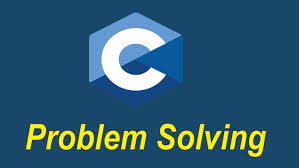
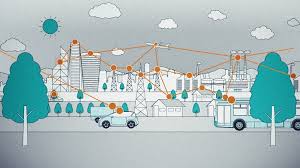
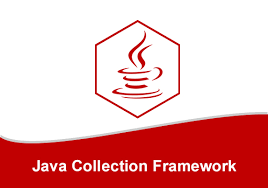
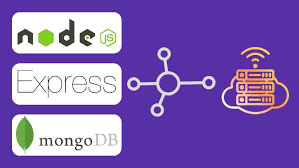
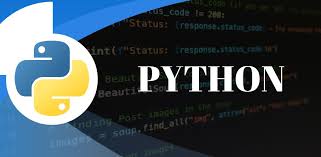
Reviews
There are no reviews yet.